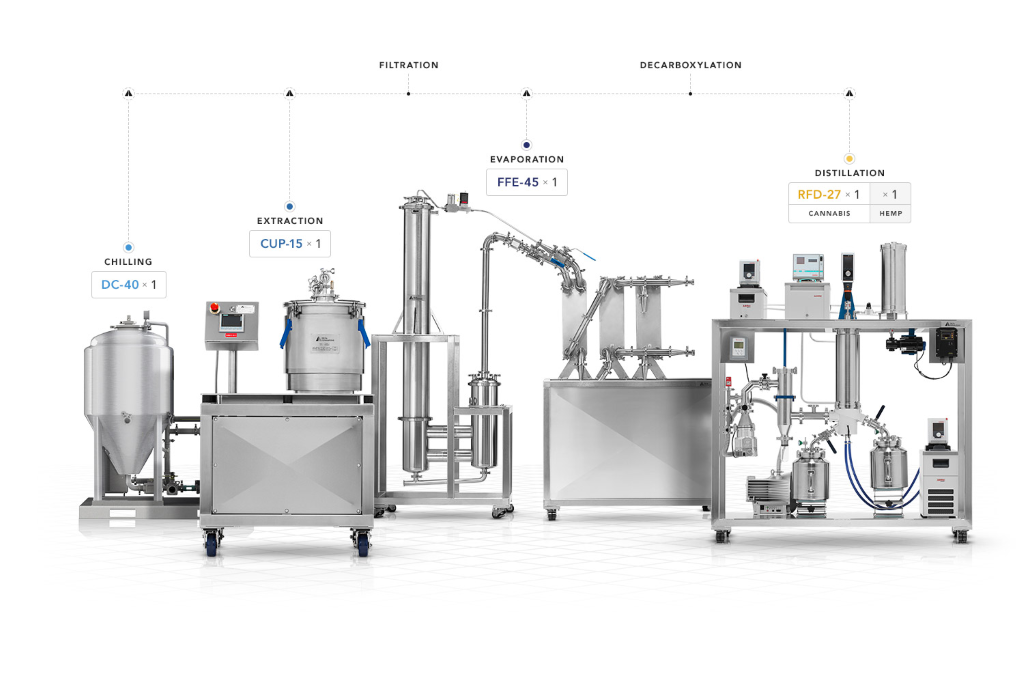RFD-27 Rolled Film Short Path Distillation
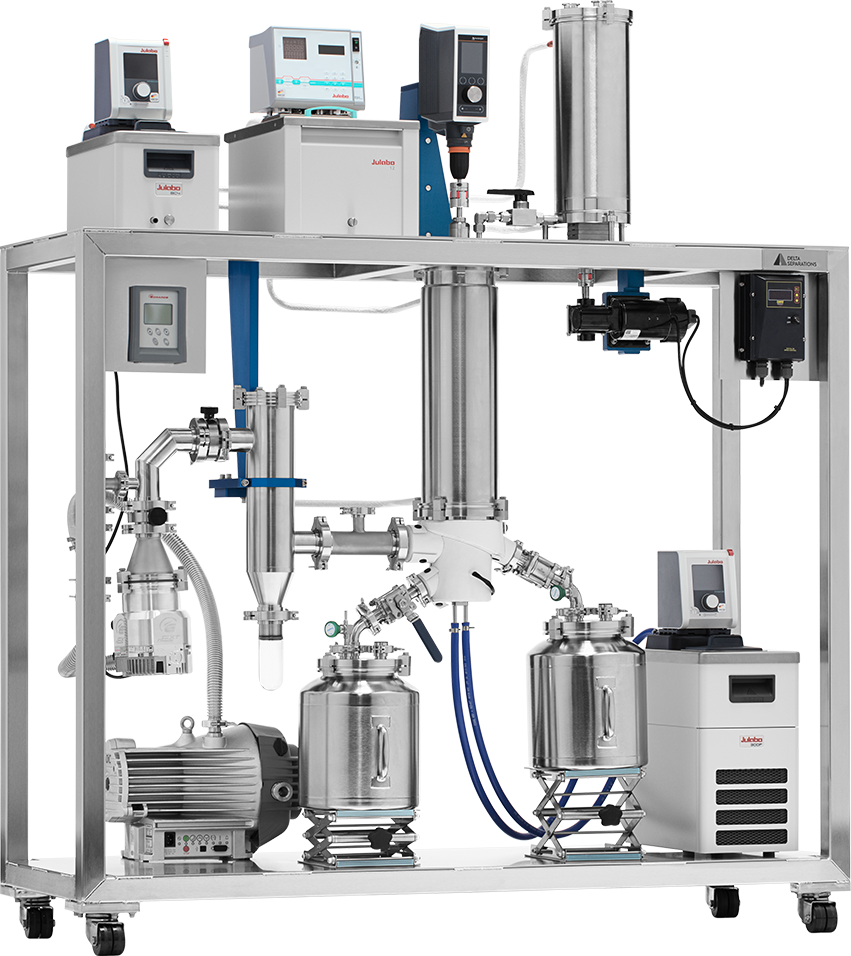
0.27m²
Evaporative Surface Area
4-5
Liters Per Hour
1
Single Operator
Efficient
The RFD-27 removes undesirable compounds to create beautifully clear finished oil by utilizing rollers to increase the evaporative surface area and the use of agitation which facilitates an efficient process with superb heat transfer capacity.


Versatile
RFD-27 is highly configurable allowing the operator to manually dial in settings and parameters based on SOP.

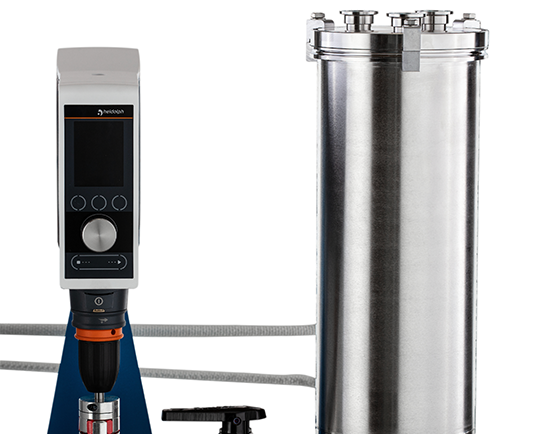
RFD-27 Technical Details
Standard on the RFD-27
- 316L Stainless steel construction
- Ultra-high vacuum liquid nitrogen
- Dry pumps included

Production Specs
Production Capacity
- Surface area: 0.27m²
- System feed rate: 4-5 liters per hour*
- Jacketed feed tank: 5 liters
- Collection tanks: 7.5 liters
Download System Pricing
Clarity
Target desired botanical compounds to create beautifully clear distillate—the highest quality and purity Category A distillate.
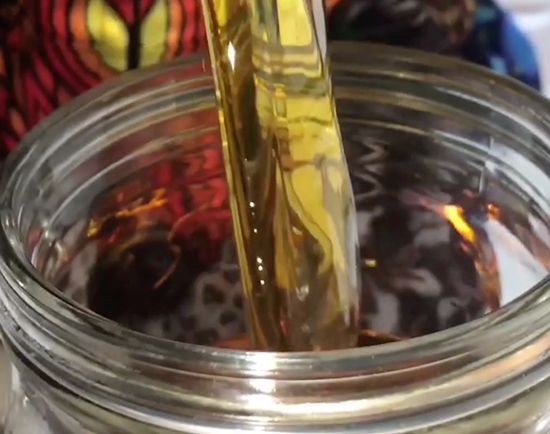
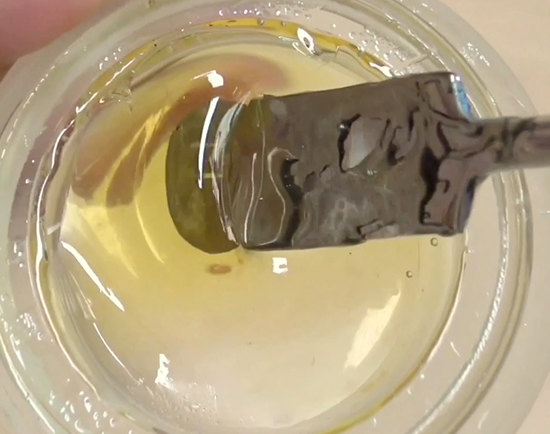
What Other Equipment will you need for your Ethanol Extraction Lab?
Learn More About Rolled Film Distillation with the RFD-27
We chose to incorporate rollers in lieu of wipers in the RFD-27 taking advantage of the additional evaporative surface area created while the rollers are not in contact with the evaporator cage increasing efficiency and throughput.
Additionally, a liquid nitrogen cold trap has been incorporated to provide extensive protection to the delicate rotors of the turbo molecular pump from what terpenes may have made it past the terpene strip.
Finally, the use of steel as the base material for the machine infrastructure avoids incidences of breakage due to negligence or wear and tear. Glass construction is useful for learning purposes, but accounting for the price of redundant glassware can be cumbersome.
For an affordable price, the RFD-27 provides a consistent, high quality distillate at a feed rate of 4-5L/hr. With a service team that’s ready and able, Delta Separations’ platform is designed with the operator in mind.
Learn More About Distillation
Distillation is a technique that dates as far back as ancient Babylon and has seen widespread use in all manner of applications from perfumery to the refinement of spirits.
The core principles of the distillation process rely on the manipulation of physical and thermodynamic properties of a mixture for the purpose of separating its components.
With a base knowledge of the molecular weights and boiling/condensing points of the substance to be separated, a series of heating and cooling elements are used to evaporate and re-condense a purified distillate from the original mixture. A large difference in the boiling points of each individual component makes the separation process all the easier.
The risk of thermal degradation of one or both components in a mixture increases linearly with the introduction of the heat that drives the evaporation of the derivatives. To mitigate this, the boiling point of materials to be distilled can be lowered with the same linear relationship by introducing a vacuum which allows for greater evaporation efficiency, lower boiling temperatures, and shorter residence times.
What Does a Short Path Distillation Set Up Look Like?
Common to many labs, a traditional short path distillation array consists of a large boiling flask typically made of a Borosilicate glass. This material is resistant to the immense amount of heat it is meant to endure during a distillation.
Along the vapor path a condensing coil will be connected through which chilled water or an analogous fluid will be run for the purpose of condensing distillates.
One or more receiving flasks are situated just under the tip of the condensing surface for the collection of the purified fractions of the distillation.
Occasionally, multiple stages of condensers are used to isolate components that have boiling points that are far enough apart that the vapours from each can be selectively captured by the condenser chilled to condensing temperature of each substance, respectively. This technique is known as fractional distillation.
A magnetic stirring element is typically used for agitation in order to keep the base mixture homogenized and free of the thermal degradation that occurs from prolonged exposure to the heating element.
To protect the vacuum pump, a cold trap is incorporated just upstream to condense any highly volatile terpenes from coating the inner components and compromising the lifespan of the pump.
Distillation of Cannabis Oils
Regarding the distillation of Cannabis oils in a lab setting, a workflow involving multiple cuts to remove several fractions of terpenes from decarboxylated crude oil ensures the absolute deepest vacuum possible during the cannabinoid pass. These terpenes must be removed as their highly volatile nature creates vapor pressure, which in turn increases the volume of gas that must be displaced by the pump to achieve a desirable distillation pressure for the desired oils.
After this step, preliminary fractions often referred to as the, “tails” will be distilled. This fraction is usually of lower quality and is separated from the main fraction known as the, “heart” fraction of the distillation which will yield the more pristinely colored and pure distillate. The end portions of the distillation will also present with subpar quality oil that is separated and is also referred to as, “tails” fractions.
The resulting lower-quality products are often used as the base for edible or topical products as opposed to the highest quality distillates that will be found in vape pens.
As the industry evolved, however, there stood another piece of technology that would be applied to cannabis distillation just as the short path distillation array had before it. Wiped film distillation has been used for many years in the refinement of petroleum oils. With a small shift in parameters, it was clear that an automated molecular distillation solution was the destiny of cannabis purification. Wiped films went on to become the standard for production scale distillate production for a myriad of reasons. With jackets through which heat regulated transfer fluid is pumped to heat the inner surfaces of the distillation array, a more sophisticated molecular distillation machine was engineered.
Wiped film distillation units use wipers to apply a thin film of oil onto the inside of a heated cylindrical surface from which the desired cannabinoids will evaporate in real time as the crude falls down the column. At the center of the wipers is situated a condensing coil that is chilled to condense the distillate as would be done on a short path coil.
This methodology ensures the absolute minimum residence time for the sensitive cannabinoids on the heated surface. At the base of the evaporator cage, the evaporative and condensing surface areas are separated and reduced to two arms from which the end products are dispensed.
With the use of gear motors for the delivery of the oil onto the column from the heat jacketed holding tank as well as the dispensing arms, the need to break vacuum to change vessels is eliminated. This feature is particularly noteworthy as the oxygen from the atmosphere in contact with the sensitive and hot cannabinoids will allow the oil to burn on itself and show as a dark striation in the finished product.
Also numbering among the improvements to a traditional short path distillation is the incorporation of a more robust turbo molecular pump that can be used to achieve vacuum in excess of 1*10^-4mbar. The combination of the low pressures as well as the maximized surface area make for a yield that is considerably greater than conventional distillation arrays.
These units can even be plumbed together using a heat jacketed transfer hose and set to distil terpenes one array through to cannabinoids on the second column. Any operator would see the operation of a wiped film distillation array as a massive improvement when being able to move away from the need to rely on the replacement of flasks or a batch system for manufacturing scale production of distillate. Cleaning the surfaces of each piece of glass used during short path distillation is a chore that is all but eliminated by a sophisticated wiped film distillation array.
